Ten weeks ago I walked into a Northwestern undergraduate class like I’ve done countless times in my life. Only this time I was the professor, not the student. My co-lecturer Leonard Lee and I taught the ins and outs of startup building and venture capital to 19 Northwestern undergrads who, for one quarter, traded the frostbite shuttles of Evanston for the Waymos of San Francisco.
We had our final class last week and I admit, I’ve never felt older than I have over the last 10 weeks, especially upon realizing that some of my go-to pop culture references of startups and technology — The Social Network, Silicon Valley on HBO, The Matrix — were released while the students were either not born yet or when they were the same age as my six and four-year-old children. I also find myself struck by how much has both changed and stayed the same in the almost 20 years since I sat in a similar seat as an undergrad.
AI is reshaping the classroom
The most striking change was the use of technology in the classroom, certainly accelerated by AI. And while there is an ongoing debate raging about the use of AI in class, Leonard and I made a conscious choice to push students to get exposure to various AI tools throughout the quarter. We actually required that students use a different tool for every homework assignment, whether it was ChatGPT to start a draft cold-outreach email, or Gamma to help build a pitch deck. We know that people who can effectively wield this new technology will have an advantage going forward and we wanted to make sure our students left feeling well equipped. (Separately, I believe practical application of AI needs to be part of the curriculum in every school…)
What surprised me was how naturally using various AI tools already came to them, with very little prompting (pun intended) from us. They used AI tools to complete assignments or to research guest speakers and come up with real-time questions. AI was one of those, “Duh, obviously” instincts for them. This is decidedly not the case for most people I interact with who graduated before 2015. For this generation, AI isn't a shiny new toy or a scary unknown, it's just another tool in their tool belt.
Deeper discussions, faster
I found the biggest impact of AI in the classroom was the dramatically improved discussions we had. With basic research and easy Q&A handled efficiently through AI-powered research, students dove straight into meatier conversation topics, whether with us or our guest speakers. When we visited Sara Ittelson, GP at Accel at their Palo Alto HQ, the conversation skipped past the surface-level, "What does a VC do?" straight to the nuances of how investment decisions are made around the partner table. When Robby Stein, VP of Product at Google responsible for AI in search visited us in class, students probed him with questions on the differences between Gemini, traditional search, and in-app AI that left him impressed.
In fact, every guest speaker commented on the quality of discussion and depth of students’ questions. Was this entirely due to AI? No. These are exceptional students. But their skilled use of these tools as research accelerators undeniably elevated the conversation.
Startup native at 21
Another striking difference between my undergrad days and what I saw from the other side of the lectern was how fluent these students were in company building and startup-speak. While entrepreneurship has certainly penetrated the zeitgeist over the last two decades (looking to start a company in college is no longer much of an exception), I was still genuinely impressed by their understanding of what made for a reasonable startup idea.
For one of our class projects, students had to develop a startup concept, build a prototype, pitch the idea, and write an investment memo. Each of the group projects went well beyond classroom exercises, they were viable concepts. These included:
A content algorithm designed to help children see higher-quality online content rather than the engagement-optimized rabbit holes that dominate today
A platform supporting small business owners in craft industries
Software to help senior living centers streamline the experience for customers, caregivers, and centers
A short-term rental marketplace for products used around an extended stay property
An AI-powered app that removes redundant and low-quality images, curating one’s most meaningful memories into a streamlined collection
These ideas showed sophisticated thinking about market gaps, user needs, and potential business models.
The more things change, the more they stay the same
Being an undergraduate today is very different than when I was in school. Despite the occasional eye roll at my dated references, as I spent more time with the class I found the core undergraduate experience—standing at the threshold of adulthood, peering into an uncertain future—remains remarkably consistent. They had the same anxieties that I had at their age. Am I making the “right” choice? Should I apply to a 2+2 business school program if I’m not sure what field I want to be in? How should I decide between consulting or banking? If I want to eventually start a company, what’s the best first job for me?
My general advice? You can probably take more risk than you realize. Don’t overthink it. And most importantly, you don't need anyone's permission to make an impact.
These students know how to use new tools, ask the right questions, and they care about the big issues we’re faced with today. And most importantly, they're doers, not just talkers. If they’re any representation of our next wave of entrepreneurs, I’d say we're in pretty good hands.
A special thanks to our amazing guest speakers Lauren from 7Wire, Robby from Google, Sara from Accel, Brad from Achieve, Mike W. from Quotient, Mike I. from Gunderson, Sahil from Onera, Andrew from Boba Guys, Patrick from Carlyle, Saurabh from Health Velocity, and Alissa from Language-Market Fit for bringing so much energy, insight, and advice to our students.
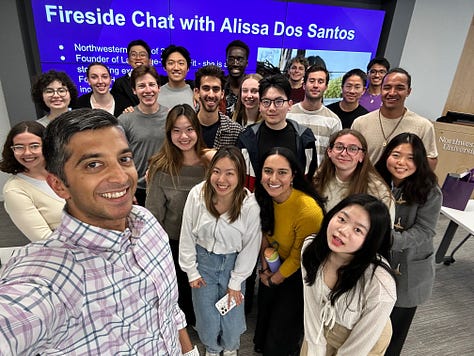
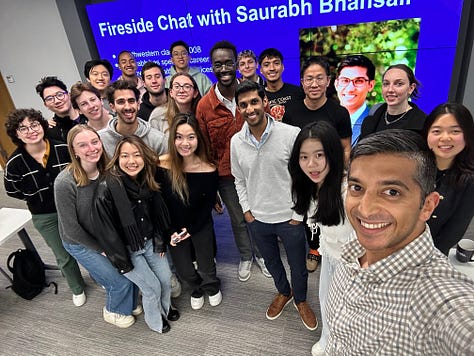
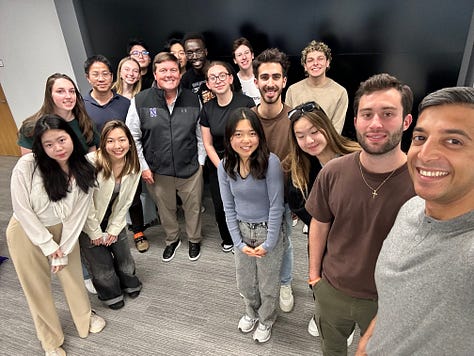
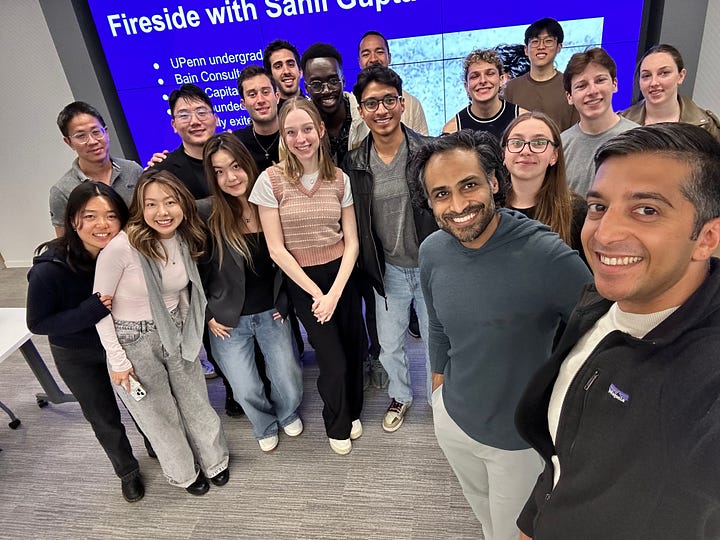
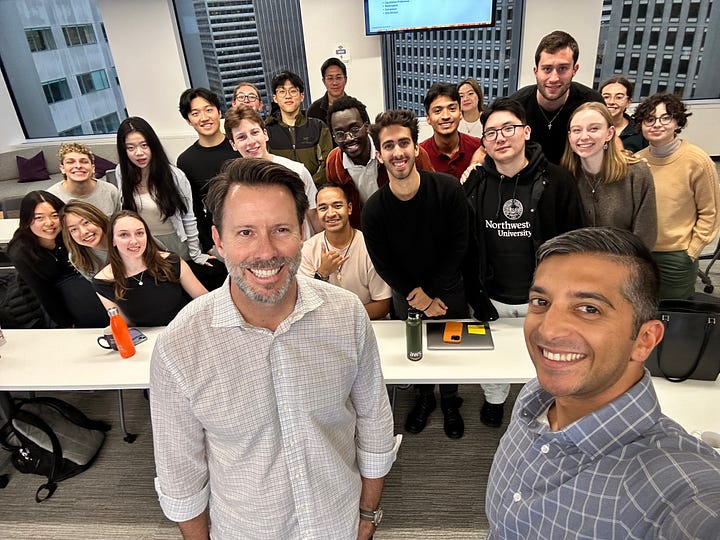
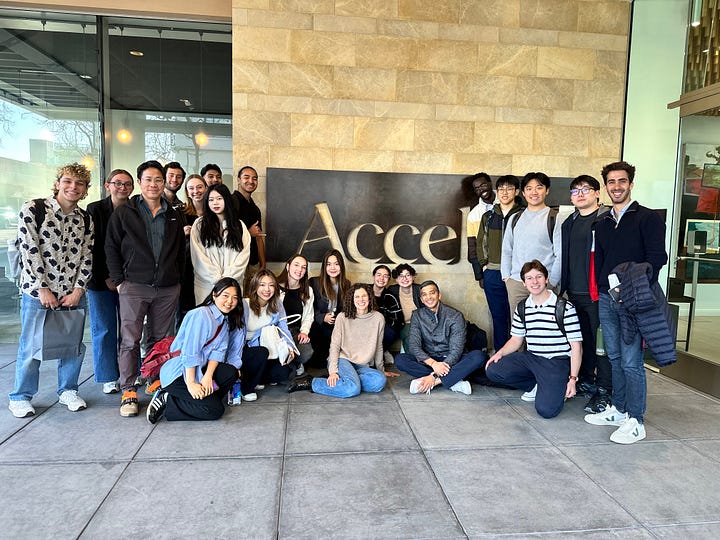
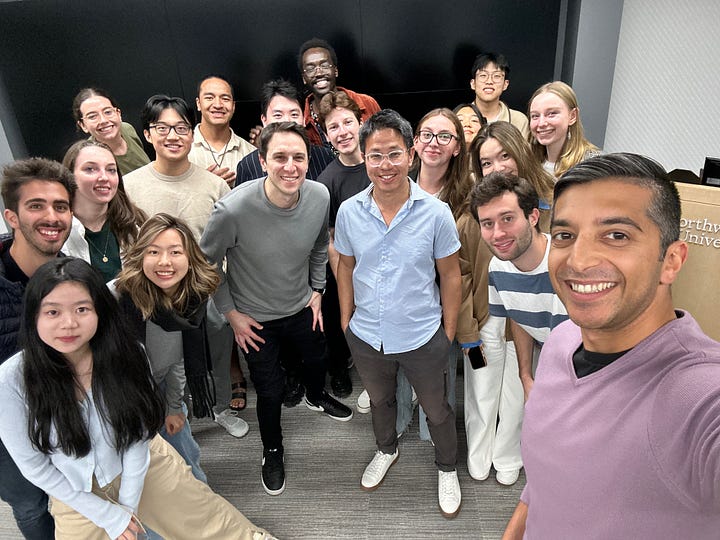






So cool!